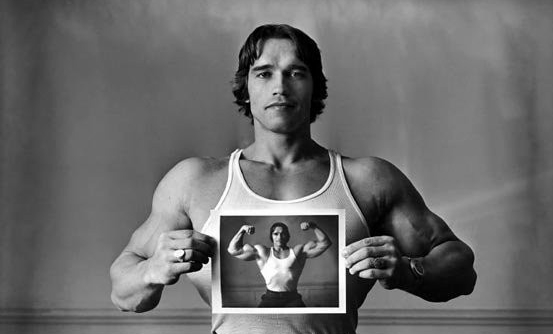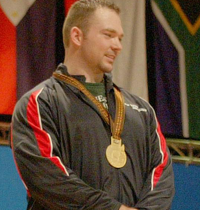Auto-Regulation Training


By Mike Tuchscherer
“Listen to your body.” That’s what I was told I must do. “Okay, well how do I do that?” I responded. Then the conversation always deteriorated into vagaries. The most I could get anyone to tell me was it was going to take me ten years to learn how to do it.
TEN YEARS!
That’s a long time! I was a new coach and I had a team of powerlifters who depended on me to prepare them for competition. We didn’t have ten years to just figure it out. But luckily for me, I had been training myself for about that long, so I was starting to grasp some of what people meant by “listen to your body”. So I set out to find my own answers. I observed what I was doing. I talked to other lifters and asked a lot of questions. I began to formulate the ideas for how to teach people to listen to their body.
Signal or noise?
You see, at the time it was popular to tell people to listen to their body. Now the pendulum has shifted and people say “how you feel is a lie”. As usual, the truth is more nuanced. I personally don’t like either catch phrase anymore.
How you feel is not a lie. I can assure you that you do actually feel the way you feel. But what do you do about that feeling? Ah ha! That is a much more useful question! And the other side saying, “Listen to your body”? Well they get it wrong too. Often people that are “listening to their body” are just over-valuing their emotional reactions. They get lost in the noise of emotions and can’t find the signal.
Auto-regulation
Where I’m going with this is toward auto-regulation. Auto-regulation simply means adjusting the day’s training to fit the body’s needs. It’s a course-correction; a feedback loop. Every single strength training system in the world that has demonstrated repeated success at the highest levels has incorporated auto-regulation. Every one. Not all use the same tools, but they all adapt to the fluctuating capabilities of the lifter.
The way many systems work is through continued oversight by a coach. The coach watches the lifter and adjusts the program as needed to fit the lifter’s needs. But many of us aren’t so lucky as to train with a top coach. I know that through most of my lifting career, I had no coaching oversight. So rather than auto-regulate in a way that relies on a coach’s eye, I found other methods that I could use on my own.
How hard was that?
Probably the single most important auto-regulatory tool you can use is RPE. RPE stands for “Rate of Perceived Exertion” (a term that comes from endurance research). It basically just means, “How hard did it feel?”
In most cases, you probably use a primitive version of this already. If you note a set as having felt particularly hard or easy, that is in essence RPE. But we can refine it a bit more and it becomes much more useful. Consider the following chart:
|
RPE |
Description |
|
10 |
Maximum effort. No reps left in the tank. |
|
9 |
Could have done one more rep. |
|
8 |
Could have done two or three more reps |
|
7 |
More than 3 reps left. Bar speed was fast if maximum effort was applied. |
|
6 |
Bar speed was fast with only moderate effort |
*RPE’s below 6 aren’t important for strength training purposes.
**We use a 1-10 scale (clearly focusing on 6+) because there was a precedent for it and a 1-10 scale is intuitively understood.
So now when you finish a set of squats, you say to yourself, “Yeah, that was hard but I could have done 1 more rep.” Great. You would annotate that as “@9” (meaning a 9 RPE). This is very easy to compare to other work that you’ve done in the past.
If I write, “That felt heavy,” two weeks later I will have forgotten what exactly that means. And if I repeat the same or similar work, it will be very difficult to see if I improved or not. On the other hand, if I say that set was “@9”, then that communicates a more precise level of effort. And if next week’s work is “@8”, then I know without a doubt I’m progressing.
More than just vanity
Aiding in precise communication is a big deal, but it can also help you auto-regulate. Remember, we want to allow the program to adapt. This means, among other things, that if the program works great and we get stronger very quickly, then we should train with heavier weights. And conversely, if we’re having a bad day, then it’s better to train with lighter weights than miss reps in training altogether. The program must adapt.
So for myself and for my lifters, we don’t plan training based on percentages of 1RM at all. Instead, we have a target number of reps and RPE. I go to the gym knowing that my top set of deadlifts will be x5 @9 (that’s 5 repetitions with a weight I could probably get 6 times). I might have an idea of what weight this will be, but it’s almost impossible to know in advance whether you’ll have a good day, a bad day, or a normal day. So I start working up toward the top weight for the day and I increase a little at a time until I reach the target RPE. If my target weight was 100 pounds x5 @9, then it might look like this:
50 pounds x 5 reps
70 pounds x 5 reps
80 pounds x 5 reps
90 pounds x 5 reps @7
95 pounds x 5 reps @8
100 pounds x 5 reps @9
Then we could perform whatever additional work was planned that day.
The beauty of using this method is that if the lifter is having a good day, it will take heavier weights to reach the goal of x5 @9. This can help keep the progress going. If the lifter has a bad day, less weight produces x5 @9. This keeps the bad day from snowballing and allows you to build progress over time. The weight on the bar adjusts automatically to the abilities of the lifter.
The right tool for the job
RPE training is not for everyone. It takes some experience to use RPE accurately, though it’s considerably less than 10 years! So if you’re a beginner, then don’t rely on RPE just yet. Do your normal program and just record the RPE so you can practice and see what happens.
RPE is also not good for people who are very lazy or very aggressive. Either of those extremes will not be able to accurately judge their RPE. But usually this isn’t a problem. The very aggressive lifters tend not to like this method anyway and the very lazy lifters usually can’t make it to the gym at all.
How to use it
If you’re just learning about RPE, then I recommend that you keep doing whatever program you’re already doing. Just practice rating the RPE for each set. Once you get the hang of rating your RPE, you’ll start to see patterns emerge. It’s at that time that you can start auto-regulating your program by adjusting the weights to fit your daily abilities.
Of course there’s much more to learn. RPE’s are one tool that will help you auto-regulate training. There are several others – many of which build on the RPE concept. But take one step at a time. Get comfortable to RPE, then learn more about auto-regulation when you’re ready.
It matters
I’ve been able to coach lifters of all levels over the years – from the very new to world champions, from the young to the old, men, women, heavy, light, and so forth. The pursuit of progress is one thing that ties us all together and using auto-regulatory tools helps me see progress in lifters of all walks. I cannot take credit for their achievements – after all, they did the work. But RPE helps us function as a better team by providing clear communication and auto-regulated training, even at a distance. I’m sure it will help you too. Take care and train well.
ABOUT THE AUTHOR

Mike Tuchscherer is the owner of Reactive Training Systems, a company dedicated to individualized strength training. The goal of RTS is to make stronger people in an ethically and intellectually honest way. Learn more by visiting www.ReactiveTrainingSystems.com.
Mike himself is an accomplished Powerlifter. He has over 17 years of experience training and researching the best training methods in the world. He currently holds the World Record deadlift and total for the 120kg class. He has coached 18 other World-level competitors including 3 other World Record holders, along with hundreds of “regular lifters”. He says, “Everyone is just after the next PR.”
Website: http://www.ReactiveTrainingSystems.com
